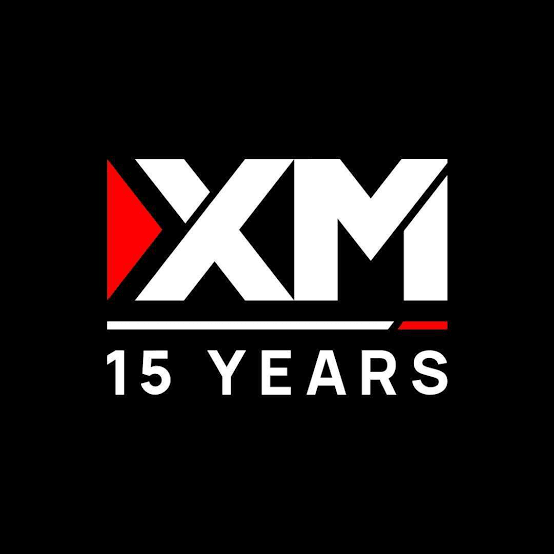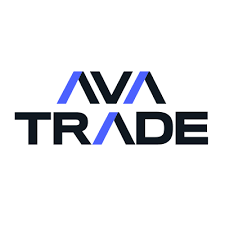Best CFD Brokers – Complete Educational Guide
Contracts for Difference (CFDs) are complex financial instruments that allow traders to speculate on price movements without owning the underlying assets. This comprehensive educational guide explains how to evaluate CFD brokers using measurable criteria: all‑in trading costs, execution behavior, platform capabilities, and risk controls. Educational only; use demo accounts before risking capital.
Educational Note: This guide is for educational purposes only. CFDs are complex instruments with high risk of losing money rapidly due to leverage. Between 65-80% of retail investor accounts lose money when trading CFDs. You should consider whether you understand how CFDs work and whether you can afford to take the high risk of losing your money.
Recommended Brokers 2025
Educational access and demo-first practice. No investment advice.
Table of Contents
Understanding CFDs
Evaluating CFD Brokers
Broker Comparisons
Trading Strategies
What Are CFDs?
Contracts for Difference (CFDs) are derivative products that allow traders to speculate on the price movements of various financial instruments without actually owning the underlying assets. When you trade CFDs, you're essentially entering into a contract with your broker to exchange the difference in value of an asset from the time the contract is opened to when it is closed.
CFDs were originally developed in London in the early 1990s as a type of equity swap that was traded on margin. They were initially used by institutional traders and hedge funds to hedge exposure to stocks on the London Stock Exchange. The product gained popularity and eventually became available to retail traders in the late 1990s.
Key Characteristics of CFDs
- Leverage: CFDs are traded on margin, meaning you only need to deposit a small percentage of the total trade value to open a position.
- No Ownership: You don't own the underlying asset, you're simply speculating on its price movement.
- Going Long or Short: CFDs allow you to profit from both rising and falling markets.
- Wide Range of Markets: CFDs are available on stocks, indices, forex, commodities, and cryptocurrencies.
- Overnight Financing: Positions held overnight typically incur financing charges.
Important Note: While CFDs offer the potential for significant profits due to leverage, they also carry substantial risk. Losses can exceed your initial deposit, which is why proper risk management is essential.
How CFDs Work
To understand how CFDs work, let's walk through a simple example:
Example: Buying Apple Inc. CFDs
Suppose Apple stock is trading at $150 per share. You believe the price will rise, so you decide to buy 100 CFDs on Apple at $150.
With a typical CFD broker, you might only need to put down 5% margin, meaning your initial outlay would be:
100 shares × $150 × 5% = $750
If Apple rises to $160, your profit would be:
($160 - $150) × 100 = $1,000
However, if Apple falls to $140, your loss would be:
($140 - $150) × 100 = -$1,000
In this example, notice how with just $750, you controlled a position worth $15,000. This is the power (and risk) of leverage.
CFD Trading Costs
When trading CFDs, you need to be aware of several potential costs:
| Cost Type | Description | Typical Range |
|---|---|---|
| Spread | The difference between the buy and sell price | 0.1 pips to several pips depending on the asset |
| Commission | Some brokers charge a separate commission per trade | $0-$10 per lot or 0.01%-0.1% of trade value |
| Overnight Financing | Cost to hold positions overnight | Typically LIBOR/SOFR +/- broker's margin |
| Inactivity Fees | Charged if account is inactive for a period | $5-$50 per month after 3-12 months |
| Currency Conversion | Cost to convert profits/losses to account currency | 0.5%-2% of converted amount |
Advantages of CFD Trading
Leverage
CFDs allow you to control large positions with relatively small amounts of capital, potentially amplifying returns.
Access to Global Markets
Trade thousands of instruments from different markets through a single account.
Short Selling
Profit from falling markets as easily as rising ones without borrowing costs.
Hedging Opportunities
Use CFDs to hedge existing physical portfolios against market downturns.
Risk Warning: While leverage can amplify profits, it also magnifies losses. It's possible to lose more than your initial deposit when trading CFDs.
Risks of CFD Trading
Leverage Risk
Small market movements can lead to substantial losses that exceed your initial deposit.
Counterparty Risk
Your contract is with the broker, so you're exposed to their financial stability.
Market Risk
Prices can move rapidly and unpredictably, especially during volatile periods.
Liquidity Risk
Some CFDs may have limited liquidity, making it difficult to enter or exit positions.
According to regulatory authorities in multiple jurisdictions, between 65% and 80% of retail CFD traders lose money. This statistic highlights the importance of proper education, risk management, and starting with demo accounts.
Regulation & Safety of CFD Brokers
One of the most critical factors when choosing a CFD broker is regulation. Regulatory oversight provides important protections for traders, including:
- Segregated Client Funds: Regulated brokers must keep client money separate from company funds.
- Compensation Schemes: Many regulators provide compensation if a broker becomes insolvent.
- Dispute Resolution: Access to formal complaints procedures and ombudsman services.
- Transparent Pricing: Requirements for clear disclosure of costs and risks.
- Leverage Limits: Many regulators now impose limits on leverage for retail clients.
Major Regulatory Bodies
| Regulator | Region | Key Protections | Leverage Limits (Retail) |
|---|---|---|---|
| FCA (Financial Conduct Authority) | UK | £85,000 compensation, segregated funds | 30:1 (major forex pairs) |
| ASIC (Australian Securities and Investments Commission) | Australia | Segregated funds, dispute resolution | 30:1 (major forex pairs) |
| CySEC (Cyprus Securities and Exchange Commission) | Cyprus/EU | €20,000 compensation, MiFID passporting | 30:1 (major forex pairs) |
| BaFin (Federal Financial Supervisory Authority) | Germany | Segregated funds, investor compensation | 30:1 (major forex pairs) |
| FSCA (Financial Sector Conduct Authority) | South Africa | Segregated funds, regulatory oversight | Varies by provider |
Safety Tip: Always verify a broker's regulatory status directly on the regulator's website, as some fraudulent entities may falsely claim to be regulated.
Trading Costs Comparison
Trading costs can significantly impact your profitability over time. When comparing CFD brokers, consider these key cost factors:
Average Spreads Comparison (in pips)
| Broker | EUR/USD | GBP/USD | Gold (XAU/USD) | US Oil | Germany 40 |
|---|---|---|---|---|---|
| Deriv | 0.6 | 0.9 | 25 | 4 | 1.0 |
| HFM | 0.5 | 0.8 | 20 | 3 | 0.8 |
| Exness | 0.3 | 0.6 | 18 | 3 | 0.7 |
| XM | 0.6 | 1.0 | 25 | 5 | 1.0 |
| AvaTrade | 0.9 | 1.2 | 30 | 4 | 1.2 |
Commission & Financing Costs
| Broker | Commission (per lot) | Overnight Financing (Long) | Overnight Financing (Short) | Inactivity Fee |
|---|---|---|---|---|
| Deriv | $0 | −2.5% | −2.5% | None |
| HFM | $0-$7 | −2.0% | −2.0% | $5 after 6 months |
| Exness | $0 | −1.5% | −1.5% | None |
| XM | $0 | −2.5% | −2.5% | $5 after 12 months |
| AvaTrade | $0 | −3.0% | −3.0% | $50 after 3 months |
Note: Spreads can vary significantly depending on market conditions, account type, and the specific instrument being traded. The figures above represent typical averages during normal market hours.
Trading Platforms & Tools
The trading platform is your primary interface with the markets, so its features, reliability, and usability are crucial factors in your trading experience.
Platform Comparison
| Broker | Primary Platform | Mobile App | Charting Tools | Automated Trading | One-Click Trading |
|---|---|---|---|---|---|
| Deriv | Deriv MT5, Deriv X | Yes | Advanced | Yes (EAs) | Yes |
| HFM | MT4, MT5, HF App | Yes | Advanced | Yes (EAs) | Yes |
| Exness | MT4, MT5, Exness Terminal | Yes | Advanced | Yes (EAs) | Yes |
| XM | MT4, MT5 | Yes | Advanced | Yes (EAs) | Yes |
| AvaTrade | MT4, MT5, AvaTradeGO | Yes | Advanced | Yes (EAs) | Yes |
Additional Trading Tools
| Broker | Economic Calendar | Signals | VPS | Education | Market Analysis |
|---|---|---|---|---|---|
| Deriv | Yes | No | Yes | Extensive | Daily |
| HFM | Yes | Yes | Yes | Extensive | Daily |
| Exness | Yes | Yes | Yes | Extensive | Daily |
| XM | Yes | Yes | Yes | Extensive | Daily |
| AvaTrade | Yes | Yes | Yes | Extensive | Daily |
Assets & Market Coverage
The range of markets available for CFD trading varies significantly between brokers. Consider which markets you want to trade and ensure your chosen broker offers adequate coverage.
Market Coverage Comparison
| Broker | Forex Pairs | Stocks | Indices | Commodities | Cryptocurrencies | ETFs |
|---|---|---|---|---|---|---|
| Deriv | 50+ | 100+ | 10+ | 6 | 10+ | No |
| HFM | 50+ | 150+ | 15+ | 7 | 15+ | Yes |
| Exness | 100+ | 200+ | 10+ | 7 | 15+ | Yes |
| XM | 55+ | 100+ | 15+ | 6 | 10+ | Yes |
| AvaTrade | 60+ | 200+ | 20+ | 10+ | 15+ | Yes |
Trading Tip: While having access to many markets can be appealing, it's often better to specialize in a few markets that you understand well rather than trading many markets superficially.
Deriv Review
Regulation
Regulated by MFSA (Malta), Labuan FSA (Malaysia), VFSC (Vanuatu)
Minimum Deposit
$5 (varies by account type)
Leverage
Up to 1:1000 (varies by jurisdiction)
Pros
- Low minimum deposit makes it accessible to beginners
- Wide range of synthetic indices for 24/7 trading
- User-friendly platforms with extensive educational resources
- Multiple account types to suit different trading styles
- Competitive spreads on major instruments
Cons
- Limited regulatory oversight compared to some competitors
- Not available to residents of some countries including USA
- Limited product range compared to multi-asset brokers
- Higher spreads on some exotic instruments
Best For:
Traders interested in synthetic markets, beginners with small accounts, and those looking for 24/7 trading opportunities.
HFM Review
Regulation
CySEC (Cyprus), FCA (UK), FSCA (South Africa), DFSA (Dubai)
Minimum Deposit
$0 (varies by account type)
Leverage
Up to 1:1000 (varies by jurisdiction)
Pros
- Strong regulatory framework with multiple licenses
- No minimum deposit on some account types
- Wide range of trading instruments across multiple asset classes
- Competitive spreads and fast execution
- Excellent educational resources and customer support
Cons
- Not available to US residents
- Withdrawal fees on some payment methods
- Limited product offerings in some regions
- Platform can be overwhelming for complete beginners
Best For:
Serious retail traders looking for a well-regulated broker with competitive pricing and a wide range of markets.
Exness Review
Regulation
CySEC (Cyprus), FCA (UK), FSCA (South Africa), FSC (Mauritius)
Minimum Deposit
$1 (varies by account type)
Leverage
Up to 1:Unlimited (varies by jurisdiction)
Pros
- Extremely low minimum deposit requirements
- Very competitive spreads, especially on major pairs
- Instant withdrawals with no fees on many methods
- User-friendly platforms with mobile trading apps
- Strong global presence with multi-language support
Cons
- Not available to US, UK, and EU residents in some cases
- Limited educational resources compared to some competitors
- Customer support quality varies by region
- Limited product range in some jurisdictions
Best For:
Traders looking for low-cost trading with small account sizes, and those prioritizing fast, fee-free withdrawals.
XM Review
Regulation
ASIC (Australia), CySEC (Cyprus), FSC (Belize)
Minimum Deposit
$5
Leverage
Up to 1:1000 (varies by jurisdiction)
Pros
- Strong regulatory framework with multiple licenses
- Low minimum deposit makes it accessible to all traders
- Extensive educational resources including live webinars
- Negative balance protection on all accounts
- Multiple account types including Islamic accounts
Cons
- Not available to US residents
- Higher spreads on some exotic pairs
- Limited product range compared to some competitors
- Withdrawal processing can be slow with some methods
Best For:
Beginners and intermediate traders looking for comprehensive educational resources and strong customer support.
AvaTrade Review
Regulation
Central Bank of Ireland, ASIC, FSCA, FSA, ADGM
Minimum Deposit
$100
Leverage
Up to 1:400 (varies by jurisdiction)
Pros
- Extensive regulatory oversight across multiple jurisdictions
- Wide range of trading platforms including proprietary options
- Comprehensive educational resources and market analysis
- Fixed spreads available on some account types
- Strong focus on automated trading solutions
Cons
- Higher minimum deposit than some competitors
- Not available to US residents
- Inactivity fees after just 3 months
- Withdrawal fees on some payment methods
Best For:
Traders looking for a well-regulated broker with multiple platform options and strong automated trading features.
Risk Management in CFD Trading
Effective risk management is arguably the most important aspect of successful CFD trading. Without proper risk controls, even the best trading strategy can lead to significant losses.
Essential Risk Management Techniques
Position Sizing
Never risk more than 1-2% of your account on a single trade. This ensures that even a series of losses won't significantly damage your capital.
Stop-Loss Orders
Always use stop-loss orders to limit potential losses. Place them at logical technical levels rather than arbitrary price points.
Leverage Management
Use leverage conservatively. Just because you can trade with 1:500 leverage doesn't mean you should. Lower leverage reduces the risk of margin calls.
Diversification
Spread your risk across different instruments and asset classes. Avoid having all your positions in correlated markets.
Risk Management Calculation Example
Example: Calculating Position Size
Account Balance: $10,000
Risk Per Trade: 1% = $100
Trade: Buy EUR/USD at 1.1000 with stop loss at 1.0950
Risk in Pips: 1.1000 - 1.0950 = 50 pips
Pip Value: For a standard lot (100,000 units), 1 pip = $10
Position Size: $100 risk ÷ (50 pips × $10 per pip per lot) = 0.2 lots
You should trade 0.2 lots to risk exactly 1% of your account on this trade.
Risk Warning: Even with proper risk management, CFD trading carries significant risks. Never trade with money you cannot afford to lose.
CFD Trading Strategies
There are numerous trading strategies that can be applied to CFD trading. The best strategy for you will depend on your trading style, time commitment, risk tolerance, and market knowledge.
Popular CFD Trading Strategies
| Strategy | Timeframe | Description | Risk Level |
|---|---|---|---|
| Trend Following | Medium to Long-term | Identify and trade in the direction of established market trends | Medium |
| Range Trading | Short to Medium-term | Buy at support levels and sell at resistance levels in sideways markets | Medium |
| Breakout Trading | Short-term | Enter positions when price breaks through key support or resistance levels | High |
| News Trading | Very Short-term | Capitalize on price movements around economic news releases | Very High |
| Swing Trading | Several days to weeks | Capture price swings within a larger trend | Medium |
| Scalping | Seconds to minutes | Make numerous small profits throughout the trading day | High |
Developing Your Trading Plan
A well-defined trading plan is essential for consistent results. Your trading plan should include:
- Markets to Trade: Which instruments you will focus on
- Time Commitment: How much time you can dedicate to trading
- Entry Rules: Clear criteria for entering trades
- Exit Rules: When to take profits and cut losses
- Risk Management: Position sizing and maximum risk per trade
- Performance Review: How you will evaluate and improve your trading
Trading Tip: No strategy works all the time. The key to long-term success is consistency, discipline, and continuous improvement based on your trading results.
Trading Psychology
Trading psychology is often overlooked but is crucial for long-term success in CFD trading. Even with a profitable strategy, psychological factors can lead to poor decision-making and losses.
Common Psychological Pitfalls
Fear of Missing Out (FOMO)
Entering trades late because you're afraid of missing a move, often leading to poor risk-reward ratios.
Revenge Trading
Trying to immediately recover losses by taking impulsive trades without proper analysis.
Overconfidence
After a series of wins, becoming complacent and taking larger risks than your strategy allows.
Confirmation Bias
Seeking information that confirms your existing view while ignoring contradictory evidence.
Developing a Trader's Mindset
- Embrace Uncertainty: Accept that not every trade will be a winner and that losses are part of trading.
- Focus on Process, Not Outcomes: Concentrate on executing your strategy correctly rather than obsessing over individual trade results.
- Maintain Discipline: Stick to your trading plan even when emotions are running high.
- Practice Patience: Wait for high-probability setups rather than forcing trades.
- Continuous Learning: Regularly review your trades and look for ways to improve.
Psychological Tip: Keep a trading journal that includes not just your trade details, but also your emotional state and thought process for each trade. This can help identify psychological patterns that may be affecting your performance.
Conclusion: Choosing the Right CFD Broker
Selecting the right CFD broker is a personal decision that depends on your individual trading needs, experience level, and financial goals. There is no single "best" broker for everyone.
When making your decision, prioritize:
- Regulation and Safety: Ensure your broker is properly regulated in a reputable jurisdiction.
- Trading Costs: Consider spreads, commissions, and other fees that will impact your profitability.
- Platform and Tools: Choose a platform that matches your technical needs and trading style.
- Customer Support: Test the broker's responsiveness before depositing significant funds.
- Educational Resources: Especially important for beginners looking to develop their skills.
Remember that successful CFD trading requires more than just finding the right broker. It demands proper education, disciplined risk management, realistic expectations, and continuous learning.
Final Warning: CFD trading carries a high level of risk and may not be suitable for all investors. The high degree of leverage can work against you as well as for you. Before deciding to trade CFDs, you should carefully consider your investment objectives, level of experience, and risk appetite. Most importantly, never invest money you cannot afford to lose.
Start Your Educational Journey
The best way to evaluate CFD brokers is to open demo accounts and test their platforms with virtual funds. Most brokers offer free demo accounts that allow you to practice trading without risking real money.
Recommended brokers for education and demo practice: Deriv · Deriv (alt) · HFM · Exness · AvaTrade · XM · XM (alt).
Demo Account Tip:
Treat your demo account as seriously as you would a live account. Use proper risk management, follow your trading plan, and track your performance. This will give you the most realistic preparation for live trading.




